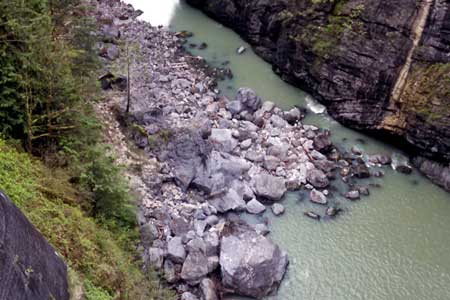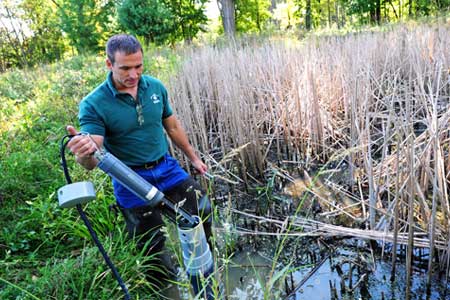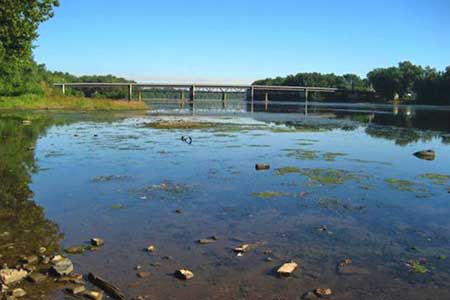Rhodamine Dye Tracing

Rhodamine is a red-colored dye that fluoresces at a particular wavelength and thus is detectable by a fluorometer when dissolved in water. It is commonly used for time of travel studies that measure the movement of water. While many studies are short-term and performed with manual sampling, other cases may call for real-time delivery of data from relatively inaccessible locations.
Rhodamine Dye Tracer Studies

Typical Rhodamine Dye Tracing System
Although some rhodamine dye tracer studies can be completed in a matter of hours using handheld sampling equipment, some applications may require extended sampling over a lengthy period of time, potentially with multiple dye injections. In such cases, configuration of a telemetry-equipped monitoring station can help to deliver the project data required.
A typical system consists of an X3 environmental data logger with wireless communications mounted on a mast or other structure on the lake, river, wetland or other water body to be studied. The system can be powered with an external battery pack or SP-Series solar power pack.
Connected to the X3 is a rhodamine fluorometer for dye detection. While various sensor options exist, one of the more common arrangements is the YSI EXO3s multiparameter sonde with rhodamine WT sensor. The sonde is delivered with a central wiper to prevent measurement interference from debris and fouling. In addition, the sonde can accommodate other sensor types for measuring general water quality parameters like temperature, pH and dissolved oxygen.
Systems communicate wirelessly with the WQData LIVE web datacenter for data management and remote logger controls. In cases where more frequent measurement is desired immediately following dye injection, the intervals can easily be adjusted through the web portal. Data management is facilitated through the available WQData LIVE features for viewing, manipulating, reporting and exporting data.
For long-term monitoring at study locations, systems can be expanded with weather stations, water level sensors, velocity sensors, flow meters, and many other sensor types. The multiple sensor ports of the X3 logger allow for many instruments to be connected simultaneously.
Contact a NexSens Applications Engineer today to discuss your rhodamine dye tracing application.

Case Studies
Washington Dam Hydrology Tracking
Near the small town of Concrete, Washington, there’s a hydropower dam on the Lower Baker River owned by Puget Sound Energy. To investigate how water moves in soils and rocks around the Lower Baker Dam, NexSens delivered nine measurement stations equipped with fluorometers and radio telemetry for a comprehensive dye tracer study.
Read MoreWetland and Urban Stream Monitoring
Heavy urban development has caused excess stormwater runoff in the Cleveland area. Resulting flash floods in the city’s metroparks can damage aquatic habitat, erode riverbanks, and carry sediment into Lake Erie. In response, Cleveland Metroparks staff have deployed a monitoring network to study flow and spread of pollution through park streams and wetlands.
Read MoreSusquehanna River Monitoring
The Susquehanna River is the longest river on the American east coast, flowing from upstate New York for over 440 miles before entering the Chesapeake Bay. It also has been subjected to various forms of pollution, including agricultural runoff, urban stormwater runoff, and raw sewage. NexSens water quality monitoring systems help monitor its condition.
Read More






